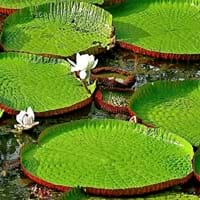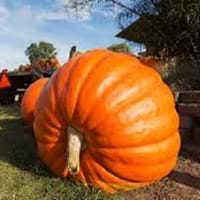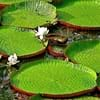Origin
Hybrid origin
South America
Types
Not Available
Not Available
Habitat
along watercourse
gardens, Moist Soils
USDA Hardiness Zone
10-15
Not Available
Sunset Zone
21,22
A1, A2, A3, H1, H2, 1a, 1b, 2a, 2b, 3a, 3b, 4, 5, 6, 7, 8, 9, 10, 11, 12, 13, 14, 15, 16, 17, 18, 19, 20, 21, 22, 23, 24
Habit
Spreading
Vining/Climbing
Flower Color
White, Pink, Light Pink
Yellow, Gold
Flower Color Modifier
Not Available
Bicolor
Fruit Color
Not Available
Yellow, Orange
Leaf Color in Spring
Green, Yellow green, Bronze
Green, Light Green
Leaf Color in Summer
Green, Yellow green
Green, Dark Green
Leaf Color in Fall
Green, Yellow green
Green, Dark Green
Leaf Color in Winter
Green, Yellow green
Not Available
Leaf Shape
Disc shaped
Heart-shaped
Plant Season
Spring, Summer, Fall
Summer, Fall
Sunlight
Full Sun
Full Sun
Growth Rate
Fast
Very Fast
Type of Soil
Clay, Loam
Loam
The pH of Soil
Acidic, Neutral
Neutral
Soil Drainage
Not Available
Well drained
Bloom Time
Summer, Indeterminate
Indeterminate
Tolerances
Wet Site
Drought
Where to Plant?
In Water
Ground
How to Plant?
Seedlings
Seedlings
Plant Maintenance
Medium
Medium
Watering Requirements
Keep immersed in water
Keep the ground moist but not water-logged, Requires consistently moist soil, Requires regular watering, Requires watering in the growing season, Water in the early morning hours
In Summer
Aquatic Plant
Lots of watering
In Spring
Aquatic Plant
Moderate
In Winter
Aquatic Plant
Average Water
Soil pH
Acidic, Neutral
Neutral
Soil Type
Clay, Loam
Loam
Soil Drainage Capacity
Not Available
Well drained
Sun Exposure
Bright direct sunlight
Full Sun
Pruning
Remove damaged leaves
Prune after flowering
Fertilizers
No fertilizers needed
Apply 5-10-5 amounts, Nitrogen, Phosphorous, Potassium
Pests and Diseases
Aphids, Snails
Red blotch
Plant Tolerance
Frost, Full Sun
Drought
Flower Petal Number
Double
Single
Foliage Texture
Bold
Coarse
Foliage Sheen
Glossy
Matte
Attracts
Insects, Moths, Snakes
Beetles, Bugs
Allergy
Skin irritation
Asthma, breathing problems, Itchiness, Nasal Congestion, Swelling, Swelling in the face
Aesthetic Uses
Cottage Garden, Showy Purposes
Not Used For Aesthetic Purpose
Beauty Benefits
Making cosmetics
Good for skin and hair, Not Available, Skin cleanser, Skin Problems
Environmental Uses
No fertilizer, pesticides, or herbicides needed, Very little waste
Air purification
Medicinal Uses
Not Available
Anemia, Antibacterial, anti-cancer, cholesterol-lowering, Fertility, High blood pressure, Immunity, Liver problems, Prevention of convulsion, Regulates Blood Sugar
Part of Plant Used
Flowers
Fruits, Leaves, Seeds
Other Uses
Used as Ornamental plant
Used As Food, Used as Ornamental plant, Used for its medicinal properties, Used in salads
Used As Indoor Plant
Sometimes
No
Used As Outdoor Plant
Yes
Yes
Garden Design
Feature Plant, Tropical, Water Gardens
Edible, Herb / Vegetable
Botanical Name
VICTORIA 'Longwood Hybrid'
CUCURBITA maxima 'Atlantic Giant'
Common Name
Giant Waterlily, Longwood Hybrid Giant Waterlily
Atlantic Giant Pumpkin, Pumpkin
In German
Riesen- Seerose
Kürbis
In French
géant nénuphar
Citrouille
In Spanish
lirio de agua
Calabaza
In Greek
νούφαρο
Κολοκύθι
In Portuguese
waterlily
Abóbora
In Polish
Lilia wodna
Dynia
In Latin
ingens aqua lilium,
cucurbita
Phylum
Angiosperms
Magnoliophyta
Class
Equisetopsida
Magnoliopsida
Order
Nymphaeales
Violales
Family
Nymphaeaceae
Cucurbitaceae
Clade
Angiosperms
Angiosperms, Eudicots, Rosids
Tribe
Not Available
Cucurbiteae
Subfamily
Not Available
Cucurbitoideae
Number of Species
Not Available
Not Available
Difference Between Giant Waterlily and Giant Pumpkin
If you are confused whether Giant Waterlily or Giant Pumpkin are same, here are some features about those plants to help you choose better. Many people think that these two plants have the same characteristics, but one can see Giant Waterlily and Giant Pumpkin Information and learn more about it. Fertilizers required for proper growth of Giant Waterlily are No fertilizers needed, whereas for Giant Pumpkin fertilizers required are Apply 5-10-5 amounts, Nitrogen, Phosphorous and Potassium. Hence, one should know the basic difference between Giant Waterlily and Giant Pumpkin if you are planning to have them in your garden to enhance its beauty.
<
Flowering PlantsImportance of Giant Waterlily and Giant Pumpkin
Want to have the most appropriate plant for your garden? You might want to know the importance of Giant Waterlily and Giant Pumpkin. Basically, these two plants vary in many aspects. Compare Giant Waterlily and Giant Pumpkin as they differ in many characteristics such as their life, care, benefits, facts, etc. Every gardener must at least have the slightest clue about the plants he wants to plant in his garden. Compare their benefits, which differ in many ways like facts and uses. The medicinal use of Giant Waterlily is Not Available whereas of Giant Pumpkin is Anemia, Antibacterial, anti-cancer, cholesterol-lowering, Fertility, High blood pressure, Immunity, Liver problems, Prevention of convulsion and Regulates Blood Sugar. Giant Waterlily has beauty benefits as follows: Making cosmetics while Giant Pumpkin has beauty benefits as follows: Making cosmetics.
Compare Facts of Giant Waterlily vs Giant Pumpkin
How to choose the best garden plant for your garden depending upon its facts? Here garden plant comparison will help you to solve this query. Compare the facts of Giant Waterlily vs Giant Pumpkin and know which one to choose. As garden plants have benefits and other uses, allergy is also a major drawback of plants for some people. Allergic reactions of Giant Waterlily are Skin irritation whereas of Giant Pumpkin have Asthma, breathing problems, Itchiness, Nasal Congestion, Swelling and Swelling in the face respectively. Having a fruit bearing plant in your garden can be a plus point of your garden. Giant Waterlily has no showy fruits and Giant Pumpkin has showy fruits. Also Giant Waterlily is not flowering and Giant Pumpkin is not flowering . You can compare Giant Waterlily and Giant Pumpkin facts and facts of other plants too.





